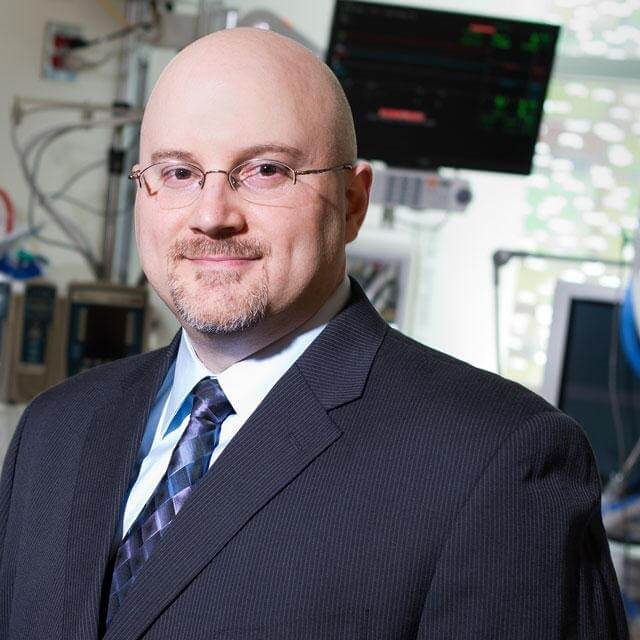You know I’ve been telling you for over a decade: if you want to stay well and live long, stay away from doctors and hospitals. I can’t put it more plainly than that.
Here’s abundant proof that old Prof is right again!
In a phrase, straight from the top of a recent Medscape article: “Misdiagnoses common, with permanent disability, death for many.”
According to a major report just published, one in 10 people with dangerous symptoms from the “Big Three” conditions (ie, cancers, infections, or major vascular events) are misdiagnosed or diagnosed too late, and more than half (53.9%) of those will be permanently disabled or die as a result of the error.
That is not just BAD, it’s diabolical. Researchers David E. Newman-Toker, MD, PhD, director of the Armstrong Institute Center for Diagnostic Excellence at Johns Hopkins University School of Medicine in Baltimore, Maryland, and colleagues, reported their findings online May 14 ahead of publication in Diagnosis.

They conducted an analysis of published statistics and found misdiagnosis rates have not declined appreciably during the last several decades, and for some diseases they appear to be rising.
Of the 9.6% of patients (call it 10%) who are misdiagnosed within the “Big Three” category, 53.9% (more than half) will suffer permanent disability or death. That’s 5% or one in twenty cases.
Dr. Newman-Toker told Medscape Medical News that numerous factors are behind misdiagnoses, but the overarching theme is lack of investment in the problem. The money spent on researching diagnostic error is only about $7 million a year; compare that with the $10 million still spent each year on smallpox research, a virtually vanished disease. “This is the most underserved public health problem that we know of in all of medicine right now,” said Newman-Toker.
The disease most often misdiagnosed (missed 62.1% of the time) among the 15 top misdiagnosed conditions was spinal abscess, an infection that can compress the spinal cord and cause paraplegia (paralysis of the lower body).
With cancers, the diseases most likely to be missed are those with the least successful diagnostic screening programs, the authors suggest. The lowest misdiagnosis and harm rates were seen with prostate cancer (2.4%, 1.2%), where screening is frequent in the United States. The highest misdiagnosis and error-harm rates were for lung cancer (22.5%, 13.8%), where screening remains below recommended levels.
Once again, if you want to get a cancer, get prostate cancer! Lung cancer they screw it up just about 1 in 4 cases!
For the other “Big Three” diseases—Infections and major vascular events—the most-missed diagnoses were endocarditis (25.5%, 13.4%); meningitis and encephalitis (25.6%, 14.3%); aortic aneurysm and dissection (27.9%, 16.8%); and spinal abscess (62.1%, 35.6%).
The researchers point out that myocardial infarction has the lowest diagnosis-related harm rate at 1.2%, but that comes after a half century of intense focused efforts on the problem. So nothing to be proud of!
The other 14 conditions in the list need that kind of attention to help make a big dent in diagnostic errors, he said.
Rates Have Not Declined, Some May Be Rising
The researchers note that “Big Three” misdiagnoses have not declined during the last several decades at least.
They point to an “alarming” trend, highlighted by a study analyzing Medicare data from 2007 to 2014, that showed rates of missed diagnoses for stroke, subarachnoid (brain) hemorrhage, and aortic aneurysm rupture were rising.
Strokes are about as common as heart attacks, but diagnostic error rates “are about 5 to 10 times higher,” Newman-Toker said. That’s bad news for the Boomer demographic.
One problem in primary care is the lack of time physicians have with each patient to determine whether symptoms could be serious, he said. That’s compounded if it’s a new patient and the provider may not know if a headache complaint is unusual, for instance.
“Almost any symptom could be cancer,” just to make things complicated, he noted.
There are a number of diseases that are great mimics [this is Dr. Keith now talking…] Syphilis, in the old days, was known as the master of disguise. Today I would put lyme disease (Borrelia burgdorferi) in that role. I wrote about it as such in my encyclopedic book PSYCHIATRY WITHOUT DRUGS.
Get yourself a copy of this monumental book
Lyme is not perhaps so cruel in its later stages but there is no doubt whatever it can cause a great deal of confusion and uncertainty, leading to mis-diagnosis and incorrect treatments.
The trouble is that, unlike Treponema pallidum, the causative pathogen of syphilis, Borrelia burgdorferi, can be much more difficult to eliminate, diagnostic testing is less reliable, and interactive co-pathogens are major contributors in the pathophysiology.
B. burgdorferi (named after its discoverer Wilhelm Burgdorfer) is a highly adaptable organism, with 6 times as many genes as T. pallidum and 3 times as many plasmids (loose bits of DNA) as any other bacteria, which allow it to evolve rapid genetic adaptations.
It is an arch stealth pathogen that can evade the immune system and pathophysiological defense mechanisms. Knowingly or not, most psychiatrists have at some point been perplexed by patients with late-stage psychiatric manifestations of Lyme borreliosis.
[Lyme Disease, Comorbid Tick-Borne Diseases, and Neuropsychiatric Disorders. Psychiatric Times, Dec 01, 2007]
Also there’s a lack of follow-up, either by the physician or the patient, made worse by a fractured health system in which patients may see several providers without a foolproof way that all will be informed of what’s happened to the patient in every step of care.
“It’s hard to draw a conclusion about whether things are better or worse,” he said in describing diagnostic trends over time. That should be a shock to most people, who would suppose that as science advances, and healthcare costs soar into the trillions of dollars, things are majorly improving. They are not, basically.
Pity the poor physicians, in a way, who are caught in the middle of feeling they need to do more tests to avoid misdiagnoses and yet being told they need to do fewer tests to spend healthcare dollars more efficiently.
But mostly I pity the poor patients. A 10% misdiagnosis error is staggering and should cause anyone and everyone to question whether they really do want to go and visit the doctor or go to ER. Remember, more than half those who are misdiagnosed end up dead or permanently disabled. More than one in twenty. Those are not good odds.
Take my words to heart, stay away from doctors and hospitals!
Stay Safe,

Prof. Keith Scott-Mumby
SOURCE: Marcia Frellick. Misdiagnoses Common, With Permanent Disability, Death for Many – Medscape – May 18, 2020.

